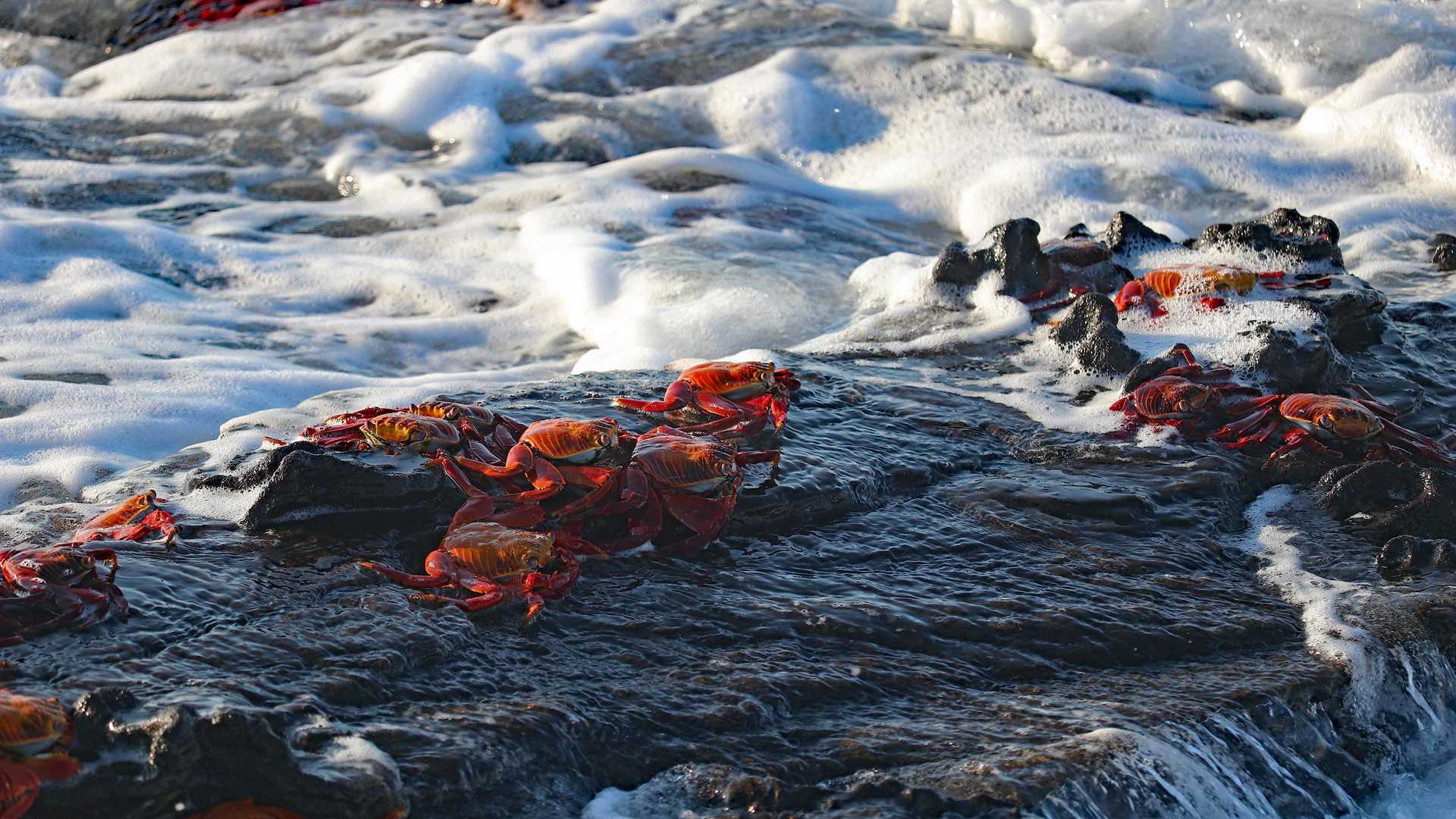Today we visited Lindblad’s adopted Island: Santiago Island. Also called by its English name, James Island, Santiago is the third largest island in the Galapagos. We spent the day visiting different sites.
In the morning, we went for a pre-breakfast walk along the shore of Espumilla Beach. We spotted young Galapagos hawks feeding on the small fish that wash ashore. After that, we jumped in the water for snorkeling and kayaking. In the afternoon, we visited Puerto Egas to swim in the sea. We enjoyed a sunset walk near the tide pools of this beautiful site.
The day ended with dinner on the sundeck and stargazing!







